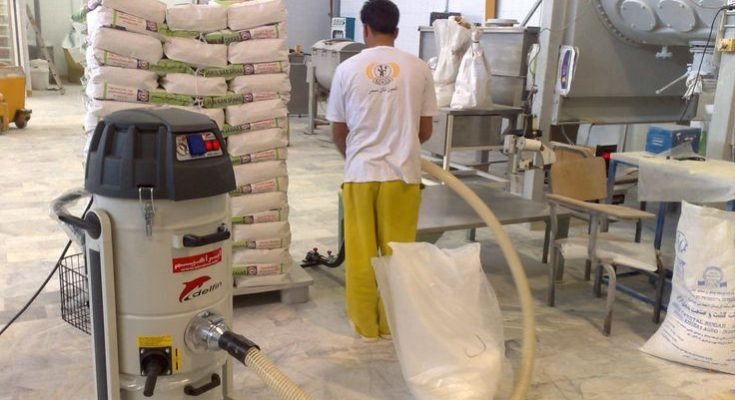As you can imagine, when working in a bakery, there’s a lot of flour dust in the atmosphere. It is essential that businesses carry out good practice involving bag opening, tipping and dough mixing. For the health of employees, exposure to dust must be kept to a minimum. The processes that take place inside a bakery can produce high levels of dust so it’s imperative to keep these levels as low as possible.
Did you know that substances like flour dust, egg powder, soya and enzyme improvers can all contribute to asthma? Even a short-term exposure can be harmful.

When adequate control measures are put in place, this risk drops considerably. One such measure is to the correct installation and maintenance of a local exhaust ventilation system. These systems should be placed at the source of any possible exposure to contaminants and enclose as much of the dust-producing process as possible. Ideally, a permanent dust extraction system should be installed, although a stand-alone unit is far better than nothing, as long as airflow is sufficient to control the airborne contaminants effectively.
Other steps that should be taken include ensuring that extraction ducts are kept short, the area is as small as workably possible and mechanical or pneumatic assistance is used for the opening of and handling of sacks.
The site should be positioned away from windows, walkways and doors to avoid the possibility of breezes interfering with the local exhaust ventilation system and spreading the dust to other areas.
Easy methods of checking that the LEV is working properly are also essential, especially when it comes to the airflow indicator. For quality components for dust extraction systems, like a Spiral Duct, visit Dust Spares

Alarms or indicators should be fitted which alert users to a blockage or failure in filters. The air discharged from the system should be discharged to a safe area, ideally away from doors, air inlets and windows.
Workers can make a difference by making sure flour is never tipped but poured gently, other ingredients are poured slowly, and mixers are started at slow speeds. Encourage employees to crush bags by rolling them up instead with the open end facing the extracting area.
Remember that workers should be provided with respiratory protective equipment should that be deemed necessary, such as activities involving cleaning and maintenance. Overalls or uniform should be of a material that does not retain dust and should be laundered by a professional service and not for employees to take home to wash.
Never allow dry sweeping of work areas. Vacuuming or wet cleaning methods should be used instead. Ideally, any vacuuming equipment should meet a minimum of dust cleaning Class M for medium hazards.

